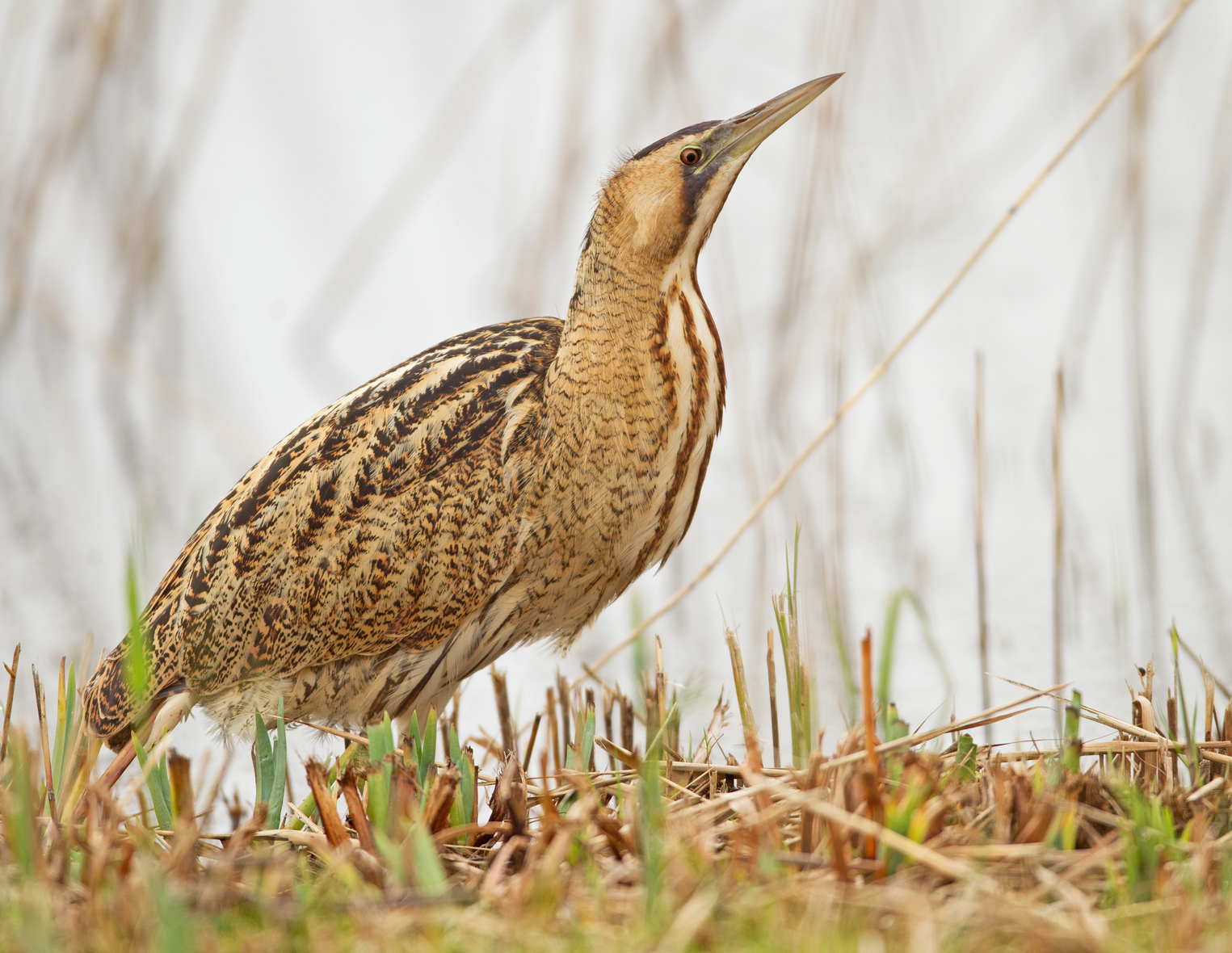Bittern population booms again
Extinct in the UK at the turn of the 20th century, over 150 male Eurasian Bitterns have been recorded on territory the country this spring, making it a true success story for British conservation.
Counted by listening for the male's far-carrying and instantly recognisable 'booming' song, 2015's total is thought to represent the highest number since the early 19th century.
Absent as a breeding species in Britain between the 1870s and 1911, the population increased to around 80 booming males in the 1950s. However, the species declined alarmingly to a low of just 11 territorial males in 1997.
Concern over a second UK extinction led to a concerted conservation program being implemented nationally, which is driving the current recovery. Bitterns prefer sizeable tracks of wet reedbed in the breeding season — a habitat which had become scarce and under-managed in the UK two decades ago.

Over 150 booming male Bitterns have been recorded in Britain this spring (Photo: Ian Clarke)
Simon Wotton, RSPB conservation scientist, explained: "In the late 1990s, Bittern was heading towards a second extinction in the UK, largely because its preferred habitat — wet reedbed — was drying out and required intensive management, restoration and habitat recreation. But thanks to efforts to improve the habitat, combined with significant funding from two projects under the European Union Life Program, Bittern was saved, and we're delighted that its success keeps going from strength to strength."
RSPB conservation director Martin Harper added: "Bittern is a species which proves that conservation can be successful, especially when you can identify the reason behind its decline and bring in measures and funding to aid its recovery."
Over the last 25 years there have been several significant habitat-restoration projects, some of which are now RSPB nature reserves, including:
- Ham Wall, in Somerset, which was created from old peat workings from 1995. Bittern has been booming regularly from 2008 with first nesting in that year. In 2015, 17 boomers were recorded at the site.
- Lakenheath, in Suffolk. This wetland site was converted from carrot fields from 1995. Bitterns were first recorded booming here in 2006 and the first confirmed nesting was recorded in 2009. This year six booming males were recorded on site.
- Ouse Fen, in Cambridgeshire. This partnership project with Hanson has seen wetland creation former mineral workings, which started around 10 years ago. In time, it will be the largest reedbed in the UK. The first confirmed booming was in 2012, with 10 recorded in 2015.
According to this year's figures the UK's top county for Bitterns is Somerset, with over 40 booming males. Following the restoration and extensive creation of large wetlands in the Avalon Marshes, at Ham Wall (RSPB), Shapwick Heath (Natural England) and Westhay Moor (Somerset Wildlife Trust), Bitterns became re-established in Somerset in 2008.
With over 80 booming males, East Anglia remains the species' regional stronghold in the UK — particularly at traditional sites on the Suffolk Coast and in the Norfolk Broads but also increasingly in the Fens, particularly at newly-created habitat.
Over 59% of the booming males are on sites protected under international law, namely the European Union's Birds and Habitat's Directives. These sites, referred to as Special Protection Areas or Special Areas of Conservation, are collectively known as Natura 2000 sites.
Martin Harper added: "These sites have been vital to the conservation of the Bittern and other key species in the UK. However, the European Union is consulting on the future of the Birds and Habitats Directives. And we fear this may lead to a weakening of the directives, with potentially disastrous consequences for many threatened species."

